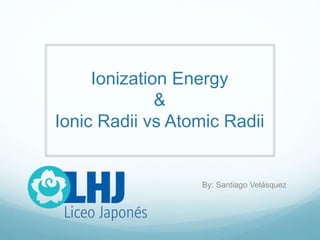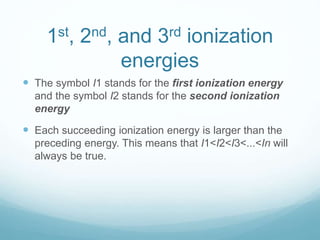The document discusses ionization energy and atomic and ionic radii. It defines an ion as a charged atom or molecule resulting from an imbalance of protons and electrons. The first ionization energy is the amount of energy required to remove an electron from the outermost shell of an atom. Each subsequent ionization energy is greater than the preceding one. Atomic radius decreases left to right on the periodic table as nuclear charge increases, while it increases down a group as electron shells expand. Positive ions have smaller radii than their parent atoms due to their increased nuclear charge.















